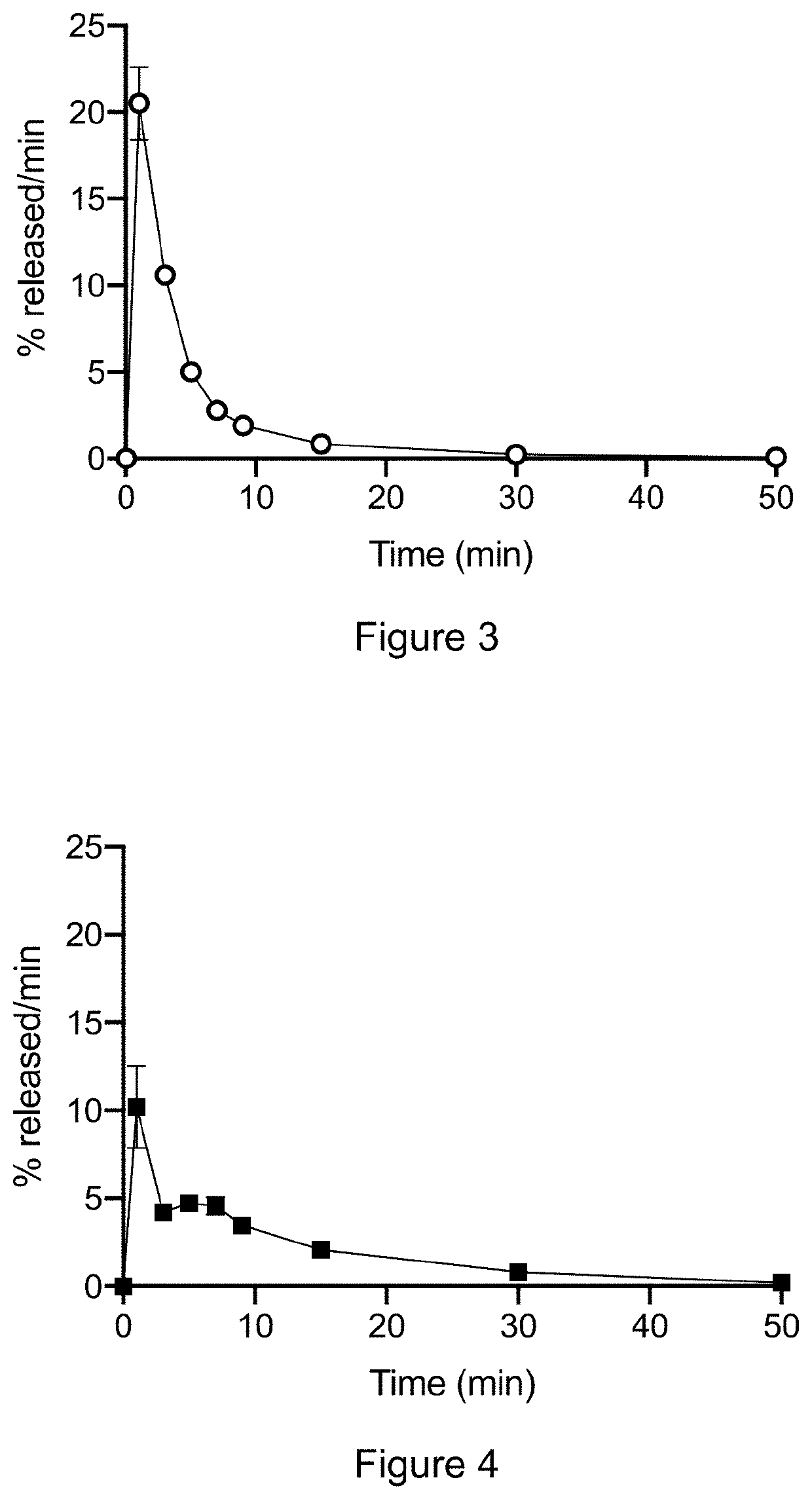Process for the manufacture of pharmaceutical compositions
a composition and process technology, applied in the field of composition manufacturing, to achieve the effect of minimizing cmax, minimizing burst effect, and convenient for physician and/or
- Summary
- Abstract
- Description
- Claims
- Application Information
AI Technical Summary
Benefits of technology
Problems solved by technology
Method used
Image
Examples
example 1
acitidine Microparticles II
[0147]Corresponding coated microparticles of azacitidine were prepared as described in Comparative Example 1 above with the exception that the powder was sourced from MSN Labs (India), the particles had a mean diameter of 5.5 μm (as determined by laser diffraction (Shimadzu, SALD-7500nano, Kyoto, Japan), and deagglomeration was carried out by sieving through a nylon sieve with a mesh size of 20 μm using a sonic sifter (Tsutsui Scientific Instruments Co., Ltd., SW-20AT, Tokyo, Japan) to shake the powder through the sieve. The drug load was determined as 74.5%
example 2
Drug Release
[0148]In vitro release studies for the particles of Comparative Example 1 and Example 1 were conducted using a Sotax CE 7smart USP 4 apparatus (Sotax AG, Switzerland) linked to a CP 7-35 piston pump (Sotax AG, Switzerland) and a C613 fraction collector (Sotax AG, Switzerland).
[0149]Flow-through cells with a 22.6 mm diameter were prepared with a 5 mm ruby bead in the tip of the cell cone, in which the suspended samples were introduced.
[0150]The samples were analyzed in duplicates with a sample amount corresponding to 50 mg azacitidine per cell. The samples (33.3 mg azacitidine / mL) were dispersed by vortexing in 0.1% Tween 20+0.25% Na-CMC in saline (0.9% NaCl) phosphate buffer with a pH of 7.2.
[0151]The apparatus was used in an open-loop set-up, in which fresh 20 mM PIPES, pH 7.2 dissolution medium was continuously introduced into the system. The temperature of the water bath was set at 37° C.±0.5° C. and the flow rate of media was set at 16 mL / min. The medium was filtered...
PUM
| Property | Measurement | Unit |
|---|---|---|
| volume-based mean diameter | aaaaa | aaaaa |
| volume-based mean diameter | aaaaa | aaaaa |
| volume-based mean diameter | aaaaa | aaaaa |
Abstract
Description
Claims
Application Information
 Login to View More
Login to View More - R&D
- Intellectual Property
- Life Sciences
- Materials
- Tech Scout
- Unparalleled Data Quality
- Higher Quality Content
- 60% Fewer Hallucinations
Browse by: Latest US Patents, China's latest patents, Technical Efficacy Thesaurus, Application Domain, Technology Topic, Popular Technical Reports.
© 2025 PatSnap. All rights reserved.Legal|Privacy policy|Modern Slavery Act Transparency Statement|Sitemap|About US| Contact US: help@patsnap.com


